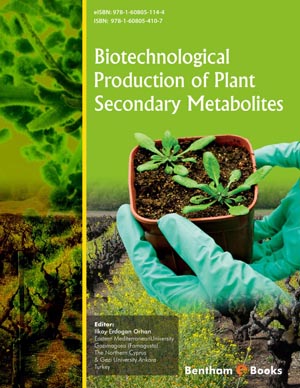Abstract
SHS investigation development is considered from the geographical and historical viewpoint. 3 stages are described. Within Stage 1 the work was carried out in the Department of the Institute of Chemical Physics in Chernogolovka where the scientific discovery had been made. At Stage 2 the interest to SHS arose in different cities and towns of the former USSR. Within Stage 3 SHS entered the international scene. Now SHS processes and products are being studied in more than 50 countries.
Abstract
This chapter deals with the production of terpenoids, including pharmaceuticals and food additives through plant cell cultures, shoot cultures and root cultures obtained through biotechnological means. Plant cell and hairy root cultures are promising potential alternative sources for the production of terpenoids of industrial importance. Several strategies have been adopted for the enhancement of metabolites. There has been tremendous success in the production of terpenoids such as capsaicin from cell cultures of Salvia officinalis and Capsicum annuum. Procedures for the commercial production of paclitaxel (Taxol®) by this technique are in advanced stages of development and may soon be employed for the manufacture of these important drugs. The levels of sugar, nitrate, phosphate and growth regulators have been shown to affect the productivity of secondary metabolite-accumulating cultures. Precursor feeding has also been an obvious and popular approach to increase metabolite production in plant cell cultures. Culture environmental conditions such as light, temperature, medium pH and oxygen have been examined for their effect upon terpenoids accumulation in many types of cultures. Organ cultures are relatively more stable. There are a number of medicinal plants whose shoot cultures have been studied for terpenoids. Similarly, root cultures are valuable sources of medicinal compounds. Until now, there is no commercial process as an alternative for root-derived compounds, except in case of utilizing hairy root culture systems. The ability of Agrobacterium rhizogenes to induce hairy roots in a range of host plants has lead to studies on it as a source of root-derived pharmaceuticals and several hairy roots have been put to scale–up studies in bioreactors. Most remarkable developments of scale-up in large vessels have been in the cultivation of Panax ginseng hairy root biomass.
Keywords:
Terpenoids, secondary metabolites, biotechnology, iridoid, saponoside, micropropagation, plant cell culture, organ culture, biotransformation, plant growth regulators, precursor, elicitation.
Recommended Chapters
We recommend

Authors:Bentham Science Books


 Download PDF Flyer
Download PDF Flyer



